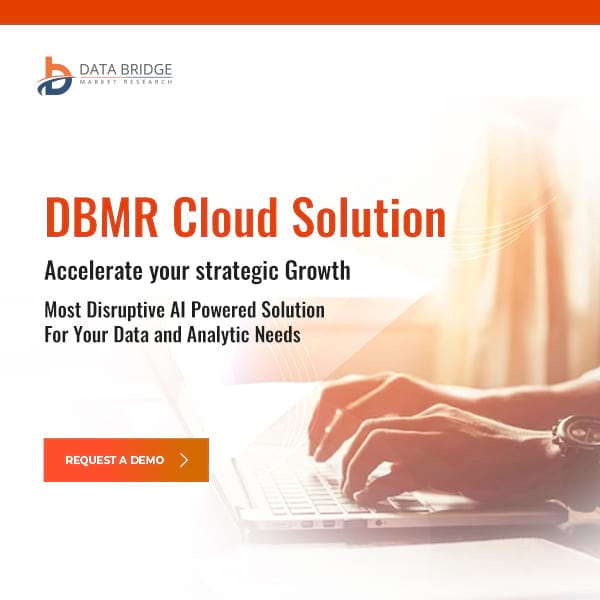Human identification is used on a large scale in paternity testing, forensics, disaster victim identification, and anthropology, with DNA analysis or profiling being a vital tool in this sector. The increase in evidence-based research has given rise to new growth potential globally. Human identification is an important research topic as it is the foundation of numerous forensic examinations. Forensic laboratories are under huge pressure to improve their research capabilities.
Access Full Report at https://www.databridgemarketresearch.com/reports/global-human-identification-market
According to Data Bridge Market Research the Human Identification Market was valued at USD 1.50 billion in 2021 and is expected to reach USD 3.51 billion by 2029, registering a CAGR of 11.2% during the forecast period of 2022 to 2029.
“Growing Forensic Applications is increasing the Market Growth”
The growing global crime rate is one of the primary factors boosting the market's growth. In typical forensic services, there are data accumulated from numerous sources, which includes serology and DNA analysis, and profiling DNA from several sources, such as scrapings from blood spatter tissue samples from autopsy and surgery, and hair with roots, among others. The biotechnology-based companies are also involved in criminal justice-related services. For instance, the Indian Government launched three fast-track DNA testing units in Nagpur, Mumbai, and Pune under the Nirbhaya scheme for women and child sexual abuse cases in 2021. This increasing number of crime and government initiatives worldwide are anticipated to boost the market growth.
What restraints the growth of Human Identification Market?
“High Cost of Gene Sequencing”
The high cost of gene sequencing is costing much and acting as a limit to the market growth. The expected cost for generating that initial 'draft' human genome sequence is ~$300 million globally, of which NIH provided around 50-60%. It costs about $600 for scientists to perform gene sequencing. Also, other techniques such as Sanger sequencing, is costly at ~$500/Mb compared to less than $0.50/Mb for NGS platforms. Thus, these factors hinder the market growth.
Segmentation: Global Human Identification Market
The human identification market is segmented based on product and service, technology, application and end users.
- Based on product and service, the market is segmented into consumables, services, instruments and software. Consumables segment is further segmented into assay kits and lab reagents and chemicals.
- On the basis of technology, human identification market is segmented into capillary electrophoresis, microfluidics, polymerase chain reaction (PCR), nucleic acid purification and extraction, automated liquid handling, microarrays, next-generation sequencing (NGS), rapid DNA analysis and others.
- On the basis of application, human identification market is segmented into forensic applications, paternity identification and others.
- On the basis of end users, human identification market is segmented into forensic laboratories, research centres, academic and government institutes and others.
Regional Insights: North America is expected to dominate the Global Human Identification Market
- North America dominates the market because of the technological advancements in the human identification system along with the growing demand for decreasing the time and cost of DNA analysis and rising use in forensics in this country.
- Asia-Pacific is expected to grow in the forecast period of 2022-2029 because of the increasing level of expenditure for the development of healthcare infrastructure in this region. Along with this, growing awareness associated with human identification technology will boost the 'market's growth rate in this region.
To know more about the study visit, https://www.databridgemarketresearch.com/reports/global-human-identification-market
Recent Developments in Global Human Identification Market
- In 2022, the Denver Office of the Medical Examiner received a USD 386,000 federal grant to purchase an in-house rapid DNA processor - technology which can produce genetic-test results in few hours leading to faster identification of victims in mass casualty events or assisting in the identification of family members of unidentified bodies.
- In 2022, a Stanford-led research team set the first Guinness World Record for the fastest DNA sequencing technique, which was used to sequence the human genome in 5 hours and 2 minutes
The Prominent Key Players Operating in the Global Human Identification Market Include:
- Cytiva (U.S.)
- PerkinElmer Inc. (U.S.)
- BioTek Instruments, Inc. (U.S.)
- Tecan Trading AG (Switzerland)
- Abbott (U.S.)
- Thermo Fisher Scientific (U.S.)
- BD (U.S.)
- Bio-Rad Laboratories, Inc. (U.S.)
- Merck KGaA (Germany)
- Agilent Technologies, Inc. (U.S.)
- Illumina, Inc. (U.S.)
- General Electric (U.S.)
- Siemens Healthcare GmbH (Germany)
- Hitachi Ltd. (Japan)
- QIAGEN (Germany)
- Eurofins Scientific (Luxembourg)
- INNOGENOMICS TECHNOLOGIES, LLC (U.S.)
- Genex Diagnostics Inc. (U.S.)
- LGC Limited (U.K.)
Above are the key players covered in the report, to know about more and exhaustive list of global human identification market companies contact, https://www.databridgemarketresearch.com/contact
Research Methodology: Global Human Identification Market
Data collection and base year analysis are done using data collection modules with large sample sizes. The market data is analyzed and estimated using market statistical and coherent models. In addition, market share analysis and key trend analysis are the major success factors in the market report. The key research methodology used by DBMR research team is data triangulation which involves data mining, analysis of the impact of data variables on the market, and primary (industry expert) validation. Apart from this, data models include Vendor Positioning Grid, Market Time Line Analysis, Market Overview and Guide, Company Positioning Grid, Company Market Share Analysis, Standards of Measurement, global vs Regional and Vendor Share Analysis. Please request analyst call in case of further inquiry.










